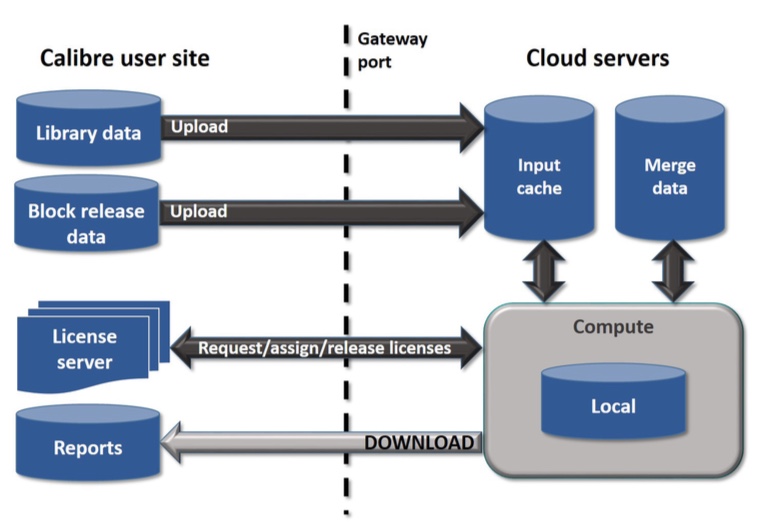Optimized DRC in the cloud
Silicon system design is a comparative latecomer to the platform-as-a-service (PaaS) model in providing access to EDA software and foundry services in the cloud. However, concerns about the integrity of security of IP traveling across public networks, in particular, have now been resolved. The questions that subsequently arise largely come down to money and time.
A new whitepaper by Omar El-Sewefy, a technical lead for DRC at Mentor, a Siemens business, looks at these issues and offers advice on how design companies can develop and then optimize their cloud computing strategies.
El-Sewefy points out that the availability of cloud-based design rule checks allows engineering companies to take advantage of PaaS’ two main advantages: reduced cost and reduced latency.
Calibre must scale, but do you have to?
Each release of the Calibre platform is designed to scale for the higher number of server CPUs needed to deal with the increasing workload created by each incoming node’s two-fold increase in transistor count.
Some companies will prefer to augment internal systems in line with this scaling (and, in terms of El-Sewefy’s recommendations they could also benefit from suggestions that apply to enterprise clouds as much as public ones). But that does entail a high initial capital investment to increase CPU count and a continuing cost in terms of maintenance. IC companies must face that for each new node.
By contrast, one of the main reasons why commercial cloud providers exist is to provide this scaling, offering it on, say, either a leased or an on-demand basis. Assuming it is satisfied with the level of security on offer, a design house now faces the first challenge of determining whether one of those PaaS models will be more cost-effective and by how much.
Latency is then a second factor in this decision. Even within large enterprises, there may be times when internal computing resources are stretched to their limit, slowing product development and consequently time-to-market.
Here, another advantage of today’s cloud-based services is that they can offer a seamless handover to additional computing resources when there is the threat of such a capacity crunch, or can handle inevitable increases in resource demands over the life of a project. Even if you do not move all of your DFM and DRC activity to the cloud, having that kind of backup would appear worthwhile.
So you’re going into the cloud
If those advantages are leading you to consider the cloud, what other factors should inform your decision?
El-Sewefy explains that Calibre-in-the-Cloud is no different from Calibre-in-the-Company in terms of how the software works. The two main actions required are to choose a provider and then set up the environment.
However, there are still a number of ways of optimizing your cloud. El-Sewefy describes several:
- Using the latest foundry rule decks, so that the latest coding practices are used and the system takes advantage of the latest Calibre engine optimizations for the best runtimes and most efficient memory consumption.
- Applying a hierarchical filing methodology. This sorts a design into cells that “are later referred to in the top levels of the design, significantly reduces data size and enables a significant reduction in final sign-off runtimes”.
- Securing access to cloud servers that are physically close to reduce latency, and that incorporate cache-based systems to improve machine performance.
- Uploading blocks separately and as available with standard cells and IP, and then uploading the routing to avoid bottlenecks. Calibre offers the DESIGNrev interface for the later assembly of the data (Figure 1).

Figure 1. Uploading blocks and routing separately, and combining data in the cloud minimizes upload time and bottlenecks (Mentor)
Mentor believes that the major obstacles to cloud computing adoption for silicon system design have been removed. Importantly, the major foundries now share that view.
“As IC companies increasingly look to leverage cloud capacity for faster turnaround times on advanced process node designs, they can be confident that running Calibre in the cloud will provide the same sign-off verification results they know and trust, while enabling them to adjust their resource usage to best fit their business requirements and market demands,” El-Sewefy concludes.